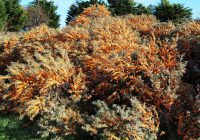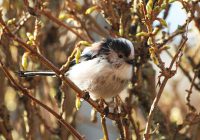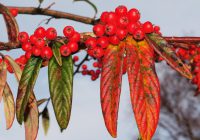Dr Phil Smith’s Wildlife Notes
November 2013
As usual, much of November was taken up with attending meetings, giving talks, writing up and circulating reports on earlier wildlife surveys. After presenting a seminar on Birkdale Green Beach at Edge Hill University, I was delighted to be contacted by a student proposing a project on Green Beach soils, a topic not previously investigated. One of the Green Beach’s unique features is the incredibly rapid change in vegetation over time, especially in the wetlands, where open slack communities develop into fen and Alder woodland within a decade or so. This is likely to have a lot to do with the soil but nobody knows – yet.
The Green Beach is still growing southwards, the latest data from Sefton Council showing that it now covers over 60ha (150 acres), all this representing new land won from the sea since 1986. Apart from its scientific and wildlife interest, the Green Beach has great value for coast protection, helping to counteract sea-level rise due to global warming of 3mm per year. While checking a grid reference from aerial photographs on www.gridreferencefinder.com, I was amused to see my car parked (with permission) at the southern end of the New Green Beach at SD3003313494. Judging by the vegetation, the photo was probably taken in summer 2010.
Continuing work started in October, four more volunteer “buckthorn bashes” were organised to clear Sea Buckthorn from the dunes west of Sands Lake, Ainsdale. The warm summer seems to have encouraged the growth of this invasive shrub, older female bushes having even more orange berries than usual. This creates a problem because birds will disperse the seeds far and wide. In a magazine gardening article, Monty Don described Sea Buckthorn as his “plant of the week”, though he acknowledged that it makes “a large thorny shrub … unless kept pruned back”! Regrettably, he made no mention of its ability to create havoc in coastal habitats.
Sefton Council made further progress controlling dense scrub in Birkdale Sandhills Local Nature Reserve. I visited the area twice during the month, enabling me to catch up with our only specimen of Black Bog-rush in a cleared slack. I discovered it in 1977, so the plant is now over 36 years old and still perfectly healthy with a diameter of over 2m. The soil around the plant had a pH of 7.5, confirming its known association with base-rich soils. Also at Birkdale on 12th was my latest ever Common Darter, reflecting the mild weather.
A pleasant stroll through National Trust woodland on 19th produced two Great Spotted Woodpeckers and a foraging flock, of which at least 10 were Long-tailed Tits. Using the well-known birders trick of “pishing”, that is imitating squeaky bird calls, I attracted them closer hoping for something a little rarer. This gave great views of these delightful little birds but nothing out of the ordinary. Nearby, a fruiting bush of Willow-leaved Cotoneaster provided a feast for a male Blackbird. Autumn colours were almost over but several Field Maples at Larkhill had enough leaves to give a spectacular golden glow in the late afternoon sunshine. I was also pleased to see that the National Trust has been clearing some of the Gorse on Larkhill Heath, providing opportunities for a wider variety of heathland plants and the insects they support.
The widespread habit of keeping wildfowl in collections has long created problems for bird-watchers. Thus, an apparent American Wigeon filmed by Ron Jackson at Marshside may have been an escaped hybrid. Similarly, a juvenile Ross’s Goose spent much of the month at Marshside Nature Reserve. Rather than a genuine straggler from Arctic Canada, this was probably also of captive origin. Finally, a male Baikal Teal photographed at Crossens on the last day of the month was either a “first for Lancashire” of this extremely rare East Asian duck or a further addition to the long list of escapees.




